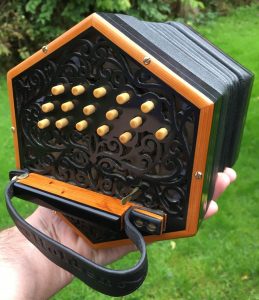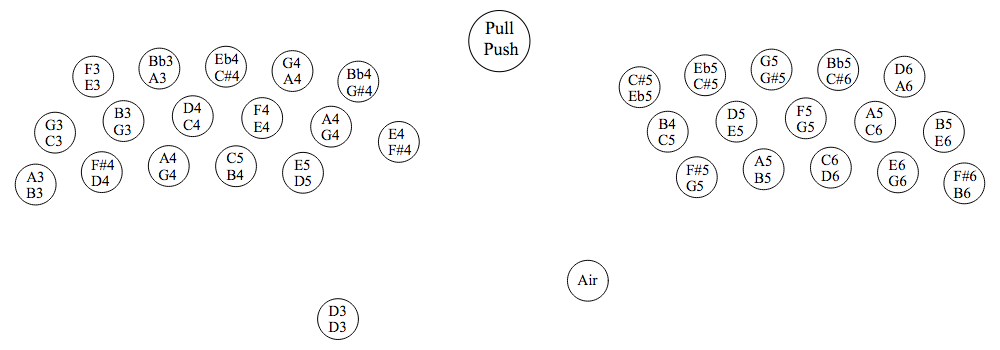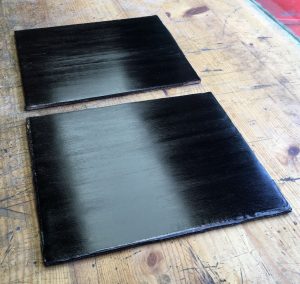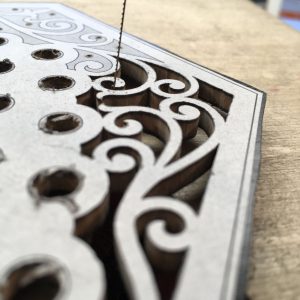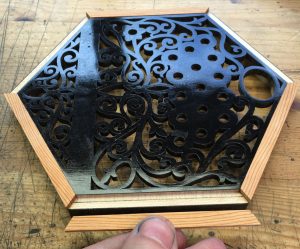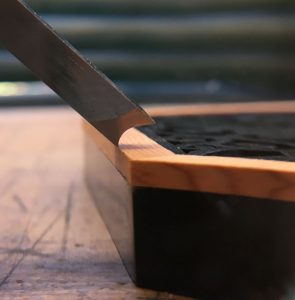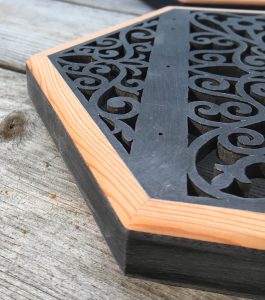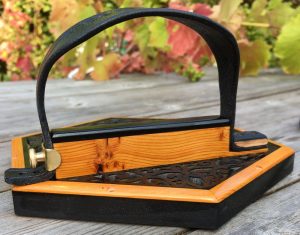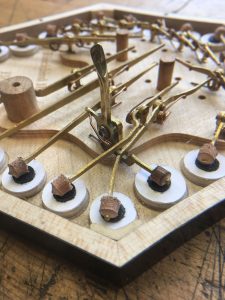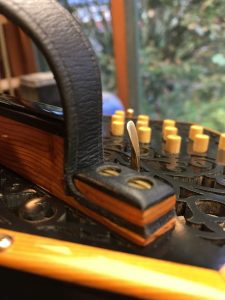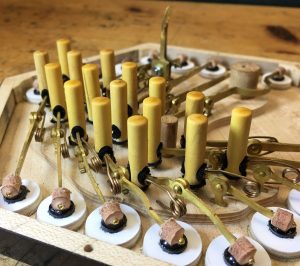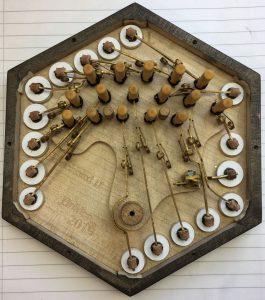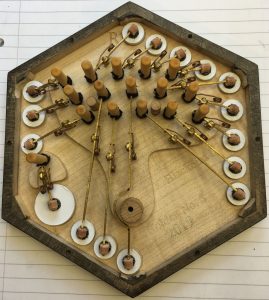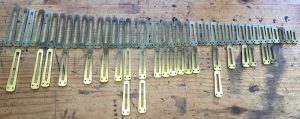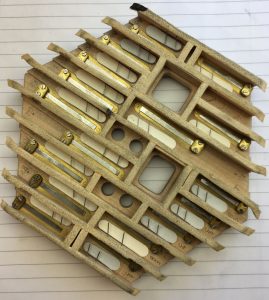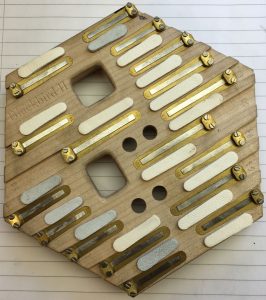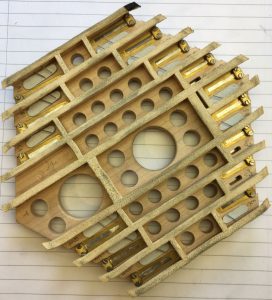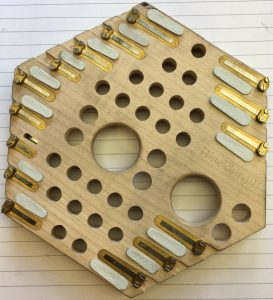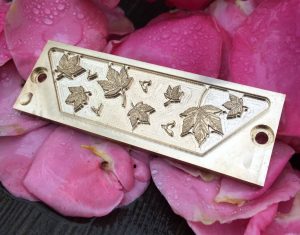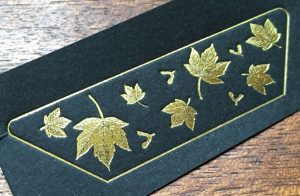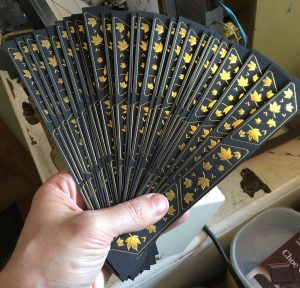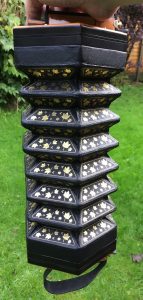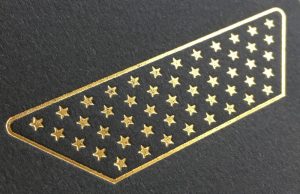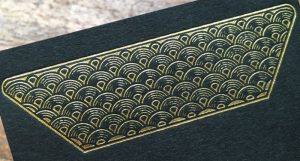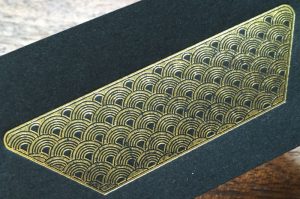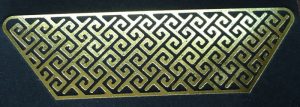I have recently completed my second Blackbird Anglo concertina. It was a complete re-design with some fairly significant improvements over the prototype model.
Here is a quick demo of it being played by its new owner. Apologies for the intermittent crackling on one microphone channel, I didn’t realise it was acting up until it was too late to re-record.
These are the specifications of the instrument:
- Standard Jeffries 30 button C/G layout with the addition of an E4/F#4 button in the sixth column of the left hand middle row and a D3/D3 drone lever on the left thumb.
- Six sides, six inches (152.4mm) wide across the flats. This is ¼” narrower than the first Blackbird, which makes a surprisingly significant difference to how ‘nimble’ it feels.
- Weight: 1177g. 1
- Six fold black goatskin bellows with custom papers. Slightly heavier-duty construction to increase stability for fast Anglo playing.
- Sycamore end plates with black-dyed tulipwood veneer. Hand pierced fretwork in a traditional-style foliate design.
- English yew border inlay.
- Simple round-over border shape.
- Sycamore action box walls with black tulipwood veneer (more labour than using solid Ebano, but slightly lighter-weight).
- Yew handrails with Ebano capping. Leather thumb pads, integral brass strap fixings.
- French polished finish.
- Brass reed frames.
- High quality hand-filed long scale steel reeds.
- Sycamore reed pans with parallel Jeffries-style chambers, not tapered.
- Sycamore action boards.
- Brass sheet riveted action levers.
- 5.7mm diameter boxwood buttons, slightly domed.
- Slotted brass end bolts.
This diagram shows the full button layout. The buttons were positioned to closely match that of the client’s existing 30 button Jeffries, with a custom extra button tacked onto the end of the left hand middle row.
The end plates have a sycamore core veneered with black-dyed tulipwood, giving an ebony-like appearance but with the strength benefits of a laminate construction.
As on all my previous instruments, I hand pierced the fretwork with a fret saw. The fretwork pattern is a new design I came up with in the traditional foliate style; I like it much better than the one I used on the first Blackbird.
The borders are made from English yew wood, giving a striking contrast to the flat black of the end plate.
I used a different border moulding shape, a simple round-over rather than the fancier ogee style. It has a more gentle radius, which means it feels more comfortable on the hand.
The handrails are made from the same yew as the border, with an Ebano capping strip.
It has a drone note controlled by a lever actuated by the left thumb. The routing for this lever proved to be slightly convoluted!
Above the end plate it connects to a simple little forged brass lever positioned out of the way so it doesn’t get pressed accidentally, but not too hard to reach when you want to use it.
The buttons are made from boxwood like on my previous instrument, though this time I simply turned them from solid wood.
For various reasons I started again from scratch with the reed pan and action board layouts. I think the new version works better in several ways, as well as making room for the extra button on the left without resorting to any inner chambers. I have also improved the way I design action levers so that the longer ones are stiffer and less prone to bouncing when playing very hard, without adding a great deal of extra weight.
After building two instruments with aluminium reed frames I returned to brass reed frames for this instrument. Brass certainly adds significantly to the weight, though this instrument still feels reasonably light in the hands. I can’t really say anything definitive about the sound difference, if any, between the two reed frame materials because I haven’t built two instruments that are otherwise identical. My suspicion at this point is that because brass frames are stiffer and have more mass to counterbalance the reed tongue, they may be capable of a very slightly louder and brighter sound, though I reserve the right to change my opinion on that in the future. There certainly isn’t a huge difference between them. The other advantage of brass frames in my experience is that they are a bit less prone to misbehaving due to distortion caused by uneven pressure from the reed pan slot.
There isn’t really a significant cost difference either way, and I currently charge the same for either material. The brass raw metal is a bit more expensive, but I find there is more labour time involved in making aluminium frames. Of course I am talking about comparing reed frames that are equally well-made from two different materials; it is a different story when you compare e.g. top quality 1920s brass framed reeds to gappy mass-produced 1960s aluminium framed reeds.
The left hand pan is fairly densely packed, significantly more so than on the first Blackbird. The pans are flat, i.e. all the chambers on the left side are one depth and all the chambers on the right side are another (slightly shallower) depth. This is how nearly all vintage Anglo concertinas were made, and it contributes to the traditional ‘punchy’ Anglo concertina sound, as compared to the arguably more balanced sound produced by a good quality English or duet concertina with tapered pans.
The small holes in the redundant chambers are just there to reduce the weight a little. I don’t think they make any difference to the sound.
A recent new acquisition for the workshop was an English-made professional quality hot foil printing press, that I bought for the purpose of printing my own bellows papers. I am able to engrave my own printing plates using my CNC milling machine.
My client and I collaborated on the design for the papers used on this instrument; we went with a falling sycamore leaf and seed theme.
I’m really pleased with how nice these look, particularly the way they glitter as the bellows open and close.
Before we settled on the sycamore design I experimented with a few other designs, which are also available for future orders.
A really simple star pattern:
Wave pattern inspired by the traditional Japanese Seigaha design:
The previous printing plate didn’t quite work the way I intended (the thin lines weren’t supposed to have gaps in them), so I tried re-cutting it a bit differently, leading to a second, denser, version of the wave pattern:
Pictish key pattern, inspired by a portion of the carving on the Aberlemno 2 stone cross:
- The instrument weighs 1177g, which is 113g less than No. 2 (the prototype Blackbird). On the one hand the instrument is a little smaller overall, has one fewer bellows fold, has veneered sycamore action boxes instead of solid Ebano, and I think the solid wooden buttons are a little lighter than the metal-capped acetal ones. On the other hand it has an extra button, I used slightly heavier duty bellows materials, slightly thicker reed pans, the longest action levers are a bit wider to make them less springy, and the low D drone reeds are significantly longer and heavier than the middle C drone reeds that were in No. 2.

